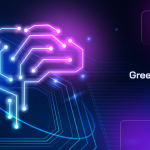
Artificial intelligence (AI) has amazed the world for years, yet how it makes decisions often remains unclear. Researchers at Kyushu University in Japan are tackling this issue with a new tool, the k-distribution method. Published in December 2024 in the IEEE Transactions on Neural Networks and Learning Systems, their work aims to shed light on how AI processes and organizes data.
“These hidden layers are like a locked black box: we see the input and output, but what is happening inside is not clear,” said Danilo Vasconcellos Varga, lead researcher and Associate Professor at Kyushu University.
Peeking inside the “black box”
The team developed this method to better understand the complex way neural networks group information. The k-distribution method works by assigning a “k value” to each data point, measuring its distance from unrelated data. This helps map how neural networks categorize items and reveals where errors might occur.
Unlike traditional tools like t-SNE and UMAP, which reduce 3D data into simple 2D visuals, this method preserves all dimensions. “Our method retains the higher dimensional space, so no information is lost. It’s the first and only model that can give an accurate view of the ‘local neighborhood’ around each data point,” Vargas explained.
The method identifies three data patterns: clustered (similar items grouped well), fractured (similar items scattered apart), and overlapping (unrelated items grouped too closely). These patterns can highlight where AI might struggle, such as misclassifying data due to poor organization.
Vargas compared it to organizing a warehouse: “In a well-organized warehouse, similar items are stored together, making retrieval easy and efficient. If items are intermixed, they become harder to find, increasing the risk of selecting the wrong item.”
Practical applications
This method could potentially reduce errors in critical areas like healthcare and automated vehicles. For instance, it might detect when an AI system struggles to tell a cyclist apart from a pedestrian in low light, allowing developers to determine where to make improvements in such a system.
Beyond technical fixes, the method addresses the ethical challenges of AI. As systems become more widespread, transparency in their decision-making becomes essential. Most of the time, when an AI system makes mistakes, there’s rarely any concrete explanation for why it did so.
“This lack of transparency becomes a serious problem when AI makes mistakes, sometimes triggered by something as small as changing a single pixel. AI might seem smart, but understanding how it comes to its decision is key to ensuring it’s trustworthy,” Vargas noted.
This research offers a way to refine AI, making it safer and more understandable for the increasing number of roles it plays in daily life.



![AI Trends for [current_date format='Y']: What's Shaping the Future of AI 4 AI trends](https://www.greenbot.com/wp-content/uploads/2025/04/AI-trends-150x150.png)
















